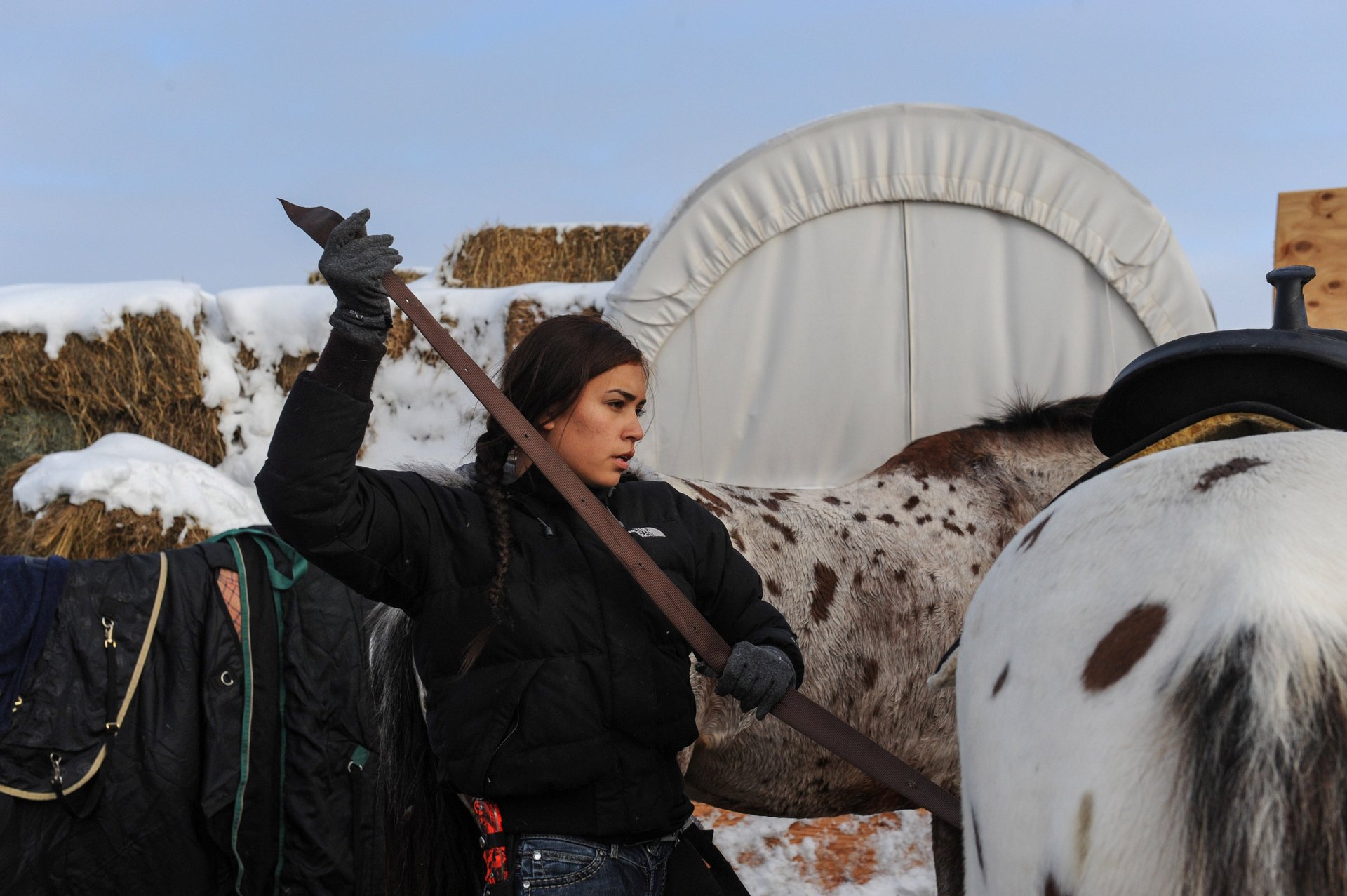North Dakota promises it won’t let Standing Rock protesters freeze
Protestors camped in resistance to the Dakota Access Pipeline face a harsh winter. But as temperatures dip below zero degrees Fahrenheit in North Dakota, emergency service officials say they won’t let protestors freeze.


Protestors camped in resistance to the Dakota Access Pipeline face a harsh winter. But as temperatures dip below zero degrees Fahrenheit in North Dakota, emergency service officials say they won’t let protestors freeze.
Greg Wilz, the state’s head of homeland security, tells the Associated Press his department is preparing to provide shelter to protestors as winter weather worsens, especially in the case of a mass evacuation.
The gatherings of Native Americans and environmentalists protesting the oil pipeline, expected to be completed early next year, started in August. Back then, daytime temperatures reached the low 90s. But next week in Cannonball, North Dakota, where protestors are set up at the Oceti Sakowin camp, temperatures are expected to drop to 7 during the day and -5 at night.
On Nov. 20, police clashed with protestors and drew criticism for hosing them with water in sub-freezing temperatures. The clashes put at least 17 protestors in the hospital, some for hypothermia.
Now Wilz tells the AP, “We aren’t going to let somebody out there freeze.” “The bottom line here is,” he says, “If we are in a situation of life and limb, we are going to be humane in anything and everything we do. So if they start evacuating en masse looking for shelter—which I highly suspect will happen—we would take care of that.”
However, the county’s sheriff’s office has warned that anyone bringing supplies to the camps could face fines up to $1,000, which won’t make it easy for protestors who stay on site to keep warm and protected in the coming months.
Protestors, also called “water protectors,” say the proposed pipeline will harm the Standing Rock Sioux Tribe’s drinking water and sacred sites. They have been ordered to leave the federally owned land by Dec. 5.